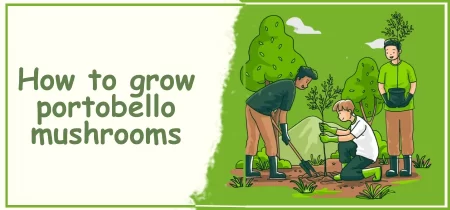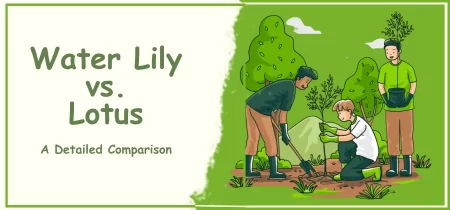Hanging plants is one of the simplest and most aesthetically pleasing ways to add greenery to any room. There are many ways to hang plants without drilling, including hooks, chains, or cords. There are many ways to hang plants without drilling. Some of the most popular methods include hooks, chains, or cords.
This blog post will show you eight genius ways to hang plants without drilling.
How to Hang Plants Using Hinges and Locks
There are many ways to hang plants without drilling, and the options vary based on your garden’s layout and space constraints. Here are four popular methods:
1. Hinges and Locks: This is the simplest method, and it works best for small gardens with limited space between plants. To use this method, first, locate the hinges or locks on the plant hanger.
Insert a bolt through one hinge or lock hole, then thread the bolt up through the other hinge or lock hole. Finally, tighten the bolts until their snug. You can now hang your plant using this method.
2. Eyehooks and Wire: This is another simple method that works well for larger gardens with plenty of spacing between plants. To use this approach, first, locate eyehooks or wire hooks near the top of each plant hanger.
Thread a wire loop through one eyehook or wire hook, then do the same with the other eyehook or wire hook. Finally, secure each loop by tightening its screws. You can now hang your plants using this method.
3. Rope and Pulleys: This is a more complex but versatile method used in small and large gardens. To use this approach, first, find rope loops near the bottom of each plant hanger. Then connect each rope loop to a pulley at either end of the hanger (so the ropes are stretched evenly). Finally, pull down on one end
How to Hang Plants Using Wire
Hanging plants without drilling may seem daunting, but there are many clever ways to do it that don’t require any special tools or expertise.
One popular technique is to use wire hangers. Simply wrap one end of the wire around the plant stem and pull until the plant is in the desired position. Make sure the other end of the wire is securely fastened to a sturdy surface so the plant doesn’t fall!
Another great option is to use eye hooks. These can be found at most home improvement stores, and simply hook one end of the hook into the top of a post and thread the other end through the hole in the bottom of the pot. You can then adjust the hook until it’s in place and secure it with a screwdriver or nail.
If you don’t have any access to either type of hook, you can also try using pliers or even your fingers. Hold the plant tightly, so it doesn’t move around while securing it.
How to Rig a Hanger
Like most homeowners, you probably dread drilling into your walls to hang plants. But there are a few clever (and easy) ways to rig a hanger without having to drill! Here are four genius hanger methods:
1. Use a Picture Hanger
This is the simplest way to hang plants; you only need a picture hanger. Simply find an old picture frame that’s the right size and shape, and use it as your hanger base. Drill small holes in the back of the frame, insert screws, and hang your plant up!
2. Make a Hanger from Wire Fence
Another super simple option is to make a hanger from a wire fence. Simply strip some wire fencing down to about 1 inch wide, set it up so that one end is attached at one end of your hanger base, and then loop the other end around the stem of your plant. Secure with screws or nails if desired. This method is especially handy if you have limited storage space – just jam the wire fence into a corner!
3. Hang Plants from Ceiling Tiles
If you have access to ceiling tiles, another great option for hanging plants is to install anchors on each tile and screw in votive holders or plant hooks instead of using traditional picture frames or wire fences. This gives you many options for arranging your plants – just move them around as needed!
4. Use an Over-the-Door Hanger
If you have an over-the-door hanger, you can use it to hang plants too. Simply measure the height of your plant, and cut a piece of hanger wire that’s a little shorter than that. Attach one end of the wire to the hanger, and then loop the other end around the stem of your plant. Hang your plant up using the over-the-door hanger and enjoy easy access to your plants!
5. Clever Ways to Hang Plants without Nails
If you’re a plant hanger like me, you know that nails can be a pain. Especially when it comes to hanging delicate plants like ferns or ivy. Here are some clever ways to hang plants without drilling:
1. Use fishing lines and hooks: This is probably the oldest method out there, and it still works great. Simply tie one end of the fishing line to the plant, then attach the other to another sturdy object above or below. If you have trouble getting the hook in exactly the right spot, put some glue on the end of the hook before attaching it to the plant.
2. Make a loop: Another great way to hang plants is to make a simple loop with wire or a strong string. First, tie one end of the string around one of the stems close to where you want it to hang, then tie the other end around something else close by (a post, for example). Pull tight on both ends, and voilà! Your plant is now hanging suspended in mid-air.
3. Use clothespins: Clothespins are another tried-and-true plant holder that works well with any type of stem or lush arrangement. Just clip one end of each pin about two inches above your desired placement for your plant and let gravity do its job!
4. Tuck them in: If you don’t have any other options, tucking plants discreetly behind furniture or other decor pieces can be a great solution. Just remove them before guests arrive, or they might think you’ve been rearranging your furniture all night!
5. Hang them with a piece of cord: If none of the other methods work for you, try suspending your plants with a piece of cord instead. Simply loop one end of the cord around a sturdy post or beam and tie it off in a knot. Then, position the plant so that its stem is hanging down towards the cord, and gently pull up on the cord to suspend it in place.
How to Drape a Plant Without Holes
There are many ingenious ways to drape plants without drilling holes in the soil. To suspend the plants, you can use bungee cords, clotheslines, or old telephone wires. You can also use a coat hanger or wire mesh to hang the plants. The possibilities are endless!
You can also purchase plant hangers that are specifically designed for this purpose.
Plant Hangers Around the Top
If you’re like most people, avoid drilling into the soil when hanging plants because it feels like a pain and it’s always messy. But if you use plant hangers, you can hang plants without doing any damage at all! Here are some genius ways to hang plants using plant hangers:
1. Use wire hangers: Hanging plants with wires is a great way to avoid damaging the roots. Simply loop one end of the wire around the stem near the top of the plant, then loop the other around a post or railing. Ensure the hooks are facing down so they don’t puncture the bark.
2. Hang plants with twine: Twine works well for smaller plants or those that don’t weigh too much. Just wind around a post or tree branch several times and tie off at either end. Make sure to hold on to one end of the twine while tying it off, so it doesn’t get tangled up in future gardening activities!
3. Hang plants with clotheslines: Another great option for hanging small plants is using your clothesline. Simply tie a piece of twine from one post to another about two-thirds of the way up, then hang your plant from there. This method is especially good for herbs that do not need a lot of water since they will drip onto the ground rather than onto your flowers.
Conclusion
If you’re like most people, you hate having to drill holes in your walls or floors just to hang plants.
Luckily, there are many ways to hang plants without needing to drill into the wall or floor. You can use suction cups, hooks, or wires to attach plants to the wall or ceiling.
You can also water plants using a garden hose or a watering can. And you can fertilize plants with compost, water, and fertilizer mix.
And finally, you can clean plants using a damp cloth or a vacuum cleaner without harsh chemicals.




Leave a Reply